To many Turks, there’s only one way to prepare artichokes. No wonder, since they’ve really perfected the preparation of this unique vegetable with zeytinyağlı enginar. Turkish stuffed artichoke bottoms with vegetables and lots of olive oil is a light and delicious dish. Perfect for a light lunch or dinner, especially in spring.
They appear ever spring, on a few corners of the labyrinth that is one of Istanbul’s biggest weekly markets, right up the road from where I live. With incredible speed and precision, they turn entire artichokes into perfectly sculptured artichoke bottoms in a matter of seconds, leaves and thick skin flying everywhere.
As soon as one’s done, it’s dropped into a huge bowl of acidic water. The expert cutter then immediately moves on to another artichoke, repeating the process infinitely, perhaps only interrupted by a few shouts of “taze enginar!” – “fresh artichokes!” until an interested customer presents herself.
Watching these skilled market sellers is mesmerising. I often find myself looking at them for a while, admiring their skills. I sometimes wonder how many times they cut themselves while perfecting their skills.
Only one recipe needed: Zeytinyağlı enginar
While much of the world set their sights on the artichoke hearts, it is the big disked artichoke bottoms the Turkish housewifes are after. In fact, finding unprepared, whole artichokes is rare. Finding it prepared in any other way, almost unheard of.
To many Turks, the artichoke really has only one use. It’s the star of zeytinyağlı enginar, where the artichoke bottom is stuffed with vegetables and braised in plenty of olive oil. After several years in Turkey, I’ve only seen it prepared in any other way at the most adventurous of restaurants.
Another case in point: Most of my Turkish cookbooks include a version of this dish, but upon going through the registers, I couldn’t find a single other recipe using artichokes.
In terms of the dish’s Turkish name, enginar is the Turkish word for artichoke. Zeytinyağlı refers to the style of cooking. It literally translates as “with olive oil”.
This style of cooking encompasses an entire family of dishes, all of which typically feature one star vegetable and copious amounts of olive oil. A few simple flavourings are added, usually fresh tomato or lemon. Dolma (stuffed vegetables), sarma (stuffed vine leaves) and imam bayıldı are perhaps the most famous of zeytinyagli, but there are lots of other tasty versions too. Among my favourites are runner beans, borlotti beans and – of course – artichokes.
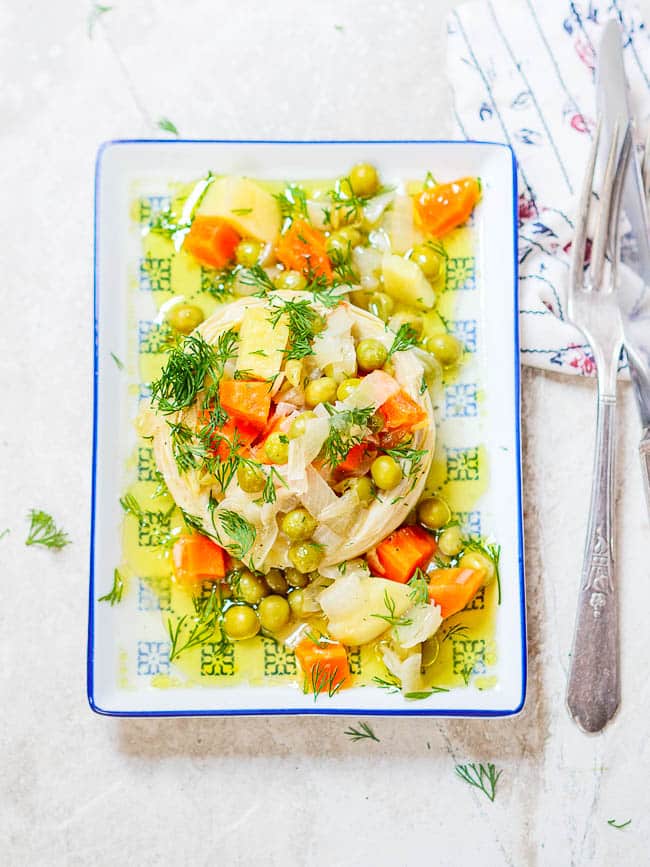
These dishes are common between the Turkish west coast, Greece (where the style of preparation is known as ladera) and the Middle East (where it’s called bil zayt). If you’re familiar with Greek or Middle Eastern cuisine, you will probably already be familiar with a number of such dishes. The differences in preparation between the various cuisines is usually minimal.
I’m going to admit that the artichoke version took some time to grow on me. Artichokes are, for a simple Northern European like me at least, a somewhat acquired taste.
But once I got the taste for it, I never looked back. For the past couple of years, I’ve been enthustiastically looking forward to making this a few times every spring.
How to cook Turkish stuffed artichokes in olive oil
Stored in acidic water, artichoke bottoms last surpisingly long. As such, the dish can in theory be eaten all year round.
However, the supporting roles of this dish are cast by spring vegetables, making Turkish artichoke bottoms in olive oil firmly a spring dish.
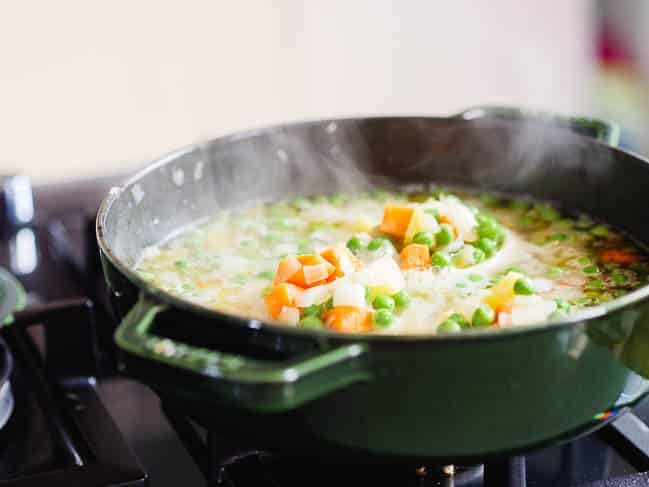
Softened onion and carrots are mandatory for the braising, as are plenty of dill and a good squeeze of lemon for the finish.
The optional bits to making zeytinyağlı enginar
A little greenery is also requisite. I usually add fresh peas from the pod to the braising stage, but you can also use fresh fava beans. Or indeed, frozen version of either. Or why not both?
The bright green peas or fava beans add more than flavour. Embodying the colours and light flavours of spring, they signal the bounty of what’s to come over the next weeks and months.
Just that reminder alone makes me happy with every bite I take!
I also add potatoes to my zeytinyağlı enginar. This is very much optional, but this is how I’ve usually had it, and how I’ve always made it.
As for the artichoke bottoms, I’m aware that they can sometimes be difficult to find outside of Turkey. If you’re not sure where to find them, I suggest asking your nearest grocer stocking foods from the Middle East. If you’re lucky, they’ll have fresh ones in acidic water to sell you. More likely, you’ll find frozen ones in the frozen foods section.
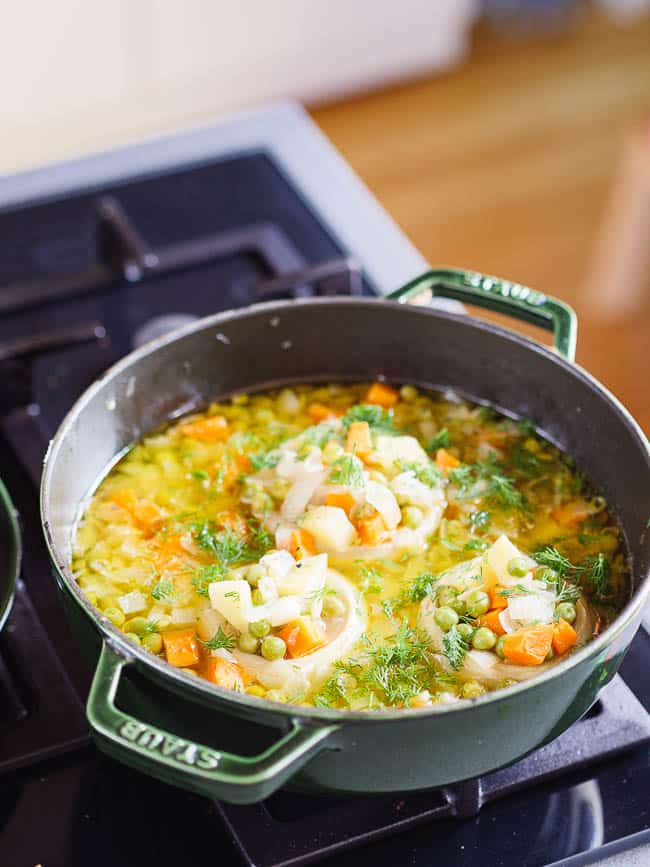
When in season, you can also buy whole artichokes and try your luck at replicating the cutting skills of the Istanbul market enginar sellers. Artichoke bottoms being readily available where I live, I have to admit I’ve never actually trimmed an artichoke this way myself. I’m afraid I therefore don’t have any other advice than checking out Youtube videos for directions on how to peel them.
Unfortunately, more readily available artichoke hearts in olive oil are not a suitable substitute in this dish.
As the name of the dish suggests, the olive oil is of utmost importance to the final result. I use a mild extra virgin olive oil from Ayvalık, the Turkish region across from the Greek island of Lesbos.
I recommend using a similar olive oil – i.e. a mild extra virgin. Anything too fruity will overpower the dish, while a low quality olive oil will fail to get the best out of the rest of the ingredients.
And wherever you’re based and whatever your experience with olive oil, make sure to take a Mediterranean approach to its use when making stuffed artichokes. The amounts of olive oil called for in this recipe are really minimum amounts. Some people even use (significantly) more.
How to serve stuffed artichoke bottoms
I usually eat this dish as a light lunch in spring. Alongside, some freshly baked or toasted sourdough bread. That’s all I need, really.
If you’re having it for dinner, rice is delicious alongside. Keep in mind that while the stuffed artichokes should be served at room temperature, the rice should be hot.
A fresh salad of Mediterranean vegetables never goes amiss, either. Nothing too strong, or you’ll overpower the delicate flavours of these Turkish style stuffed artichoke bottoms.
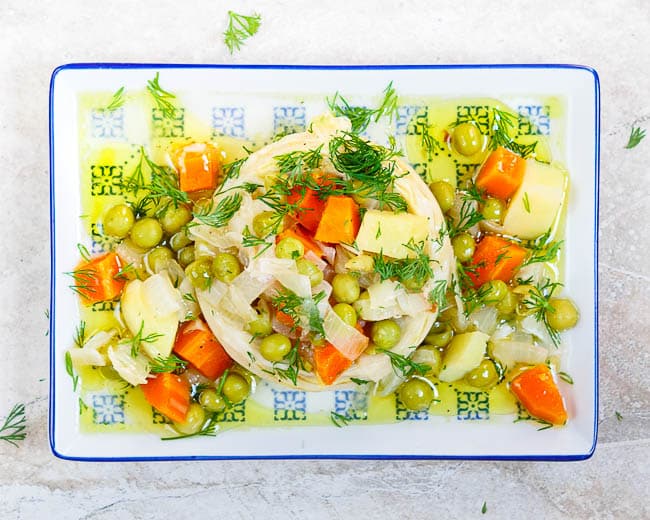
Better still, serve it as one of several Mediterranean style dishes. This is often my preferred way of having dinner. Three or four light dishes, none of them being the main dish. They can all be vegetarian, but they don’t have to be. Any meze dishes or other zeytinyağlı work really well.
This recipe can certainly be made ahead. It keeps well in the fridge for several days. Make sure to take it out of the fridge a while before eating, allowing the dish to come to room temperature. This helps bring out the flavours. Remember to check again for seasoning and add lemon juice and dill just before serving.
The recipe yields 2-4 portions, depending on what else you’re offering up.
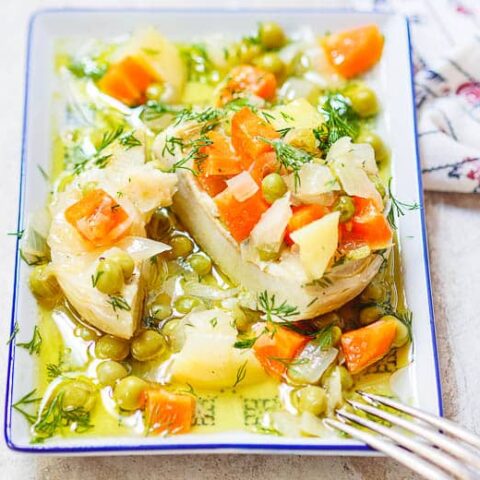
Turkish stuffed artichoke bottoms (Zeytinyağlı enginar)
Ingredients
- 75 ml extra virgin olive oil
- 1 large onion, finely chopped
- 1 medium carrot, cut into 1 cm dice
- 1 medium potato, cut into 1 cm dice
- 150 g green peas, fresh or frozen
- 1 tsp sugar
- 4 large artichoke bottoms
- 2 Tbsp lemon juice, or to taste
- 2 Tbsp finely chopped fresh dill
- boiling water
- salt and papper
How I make it
- Heat a thick bottomed pan with high edges over medium/low heat. Fry the onion in the olive oil until just starting to soften, about 5 minutes. Stir regularly to avoid any colouring.
- Add the carrots and potatoes. Continue frying, stirring regularly, until the onion is softened, but not coloured, around 5-6 minutes more.
- Add the peas and mix well. Add sugar and 300 ml (1 ⅕ cup) boiling water, as well as salt and pepper to season well. Mix. Add the artichoke bottoms and fill them with as much of the filling as you can fit. Bring the whole thing to a boil, then lower the heat to low. Simmer, lid on, until the artichoke bottoms are completely soft, 30-45 minutes. Take off the heat and leave for at least 15 minutes before serving.
- Serve with a generous squeeze of lemon and finely chopped dill.


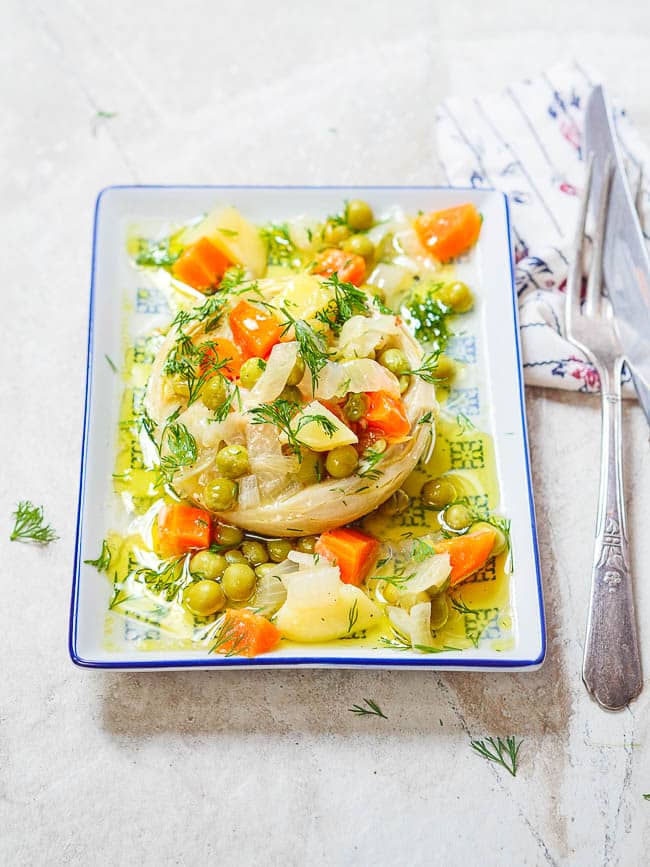



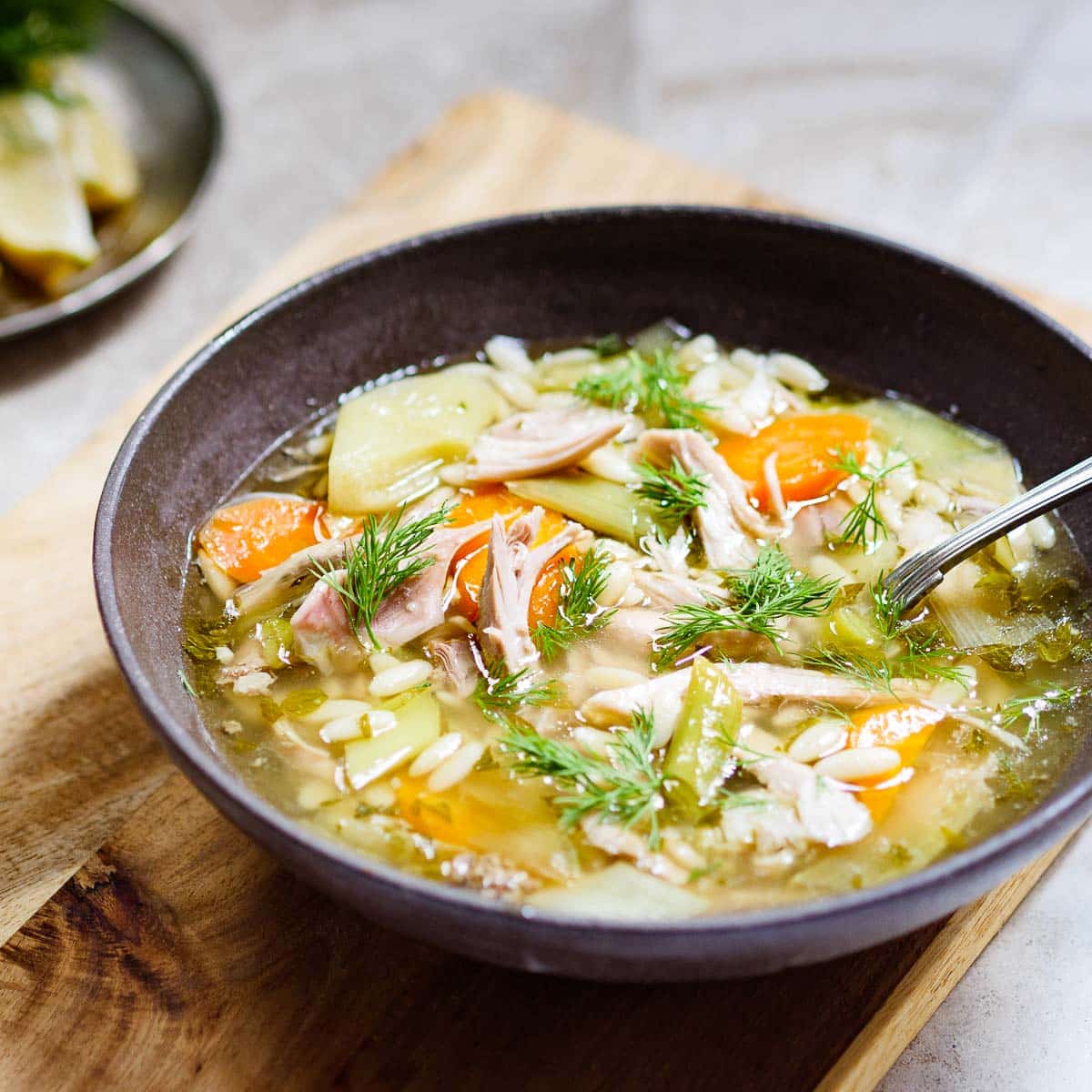
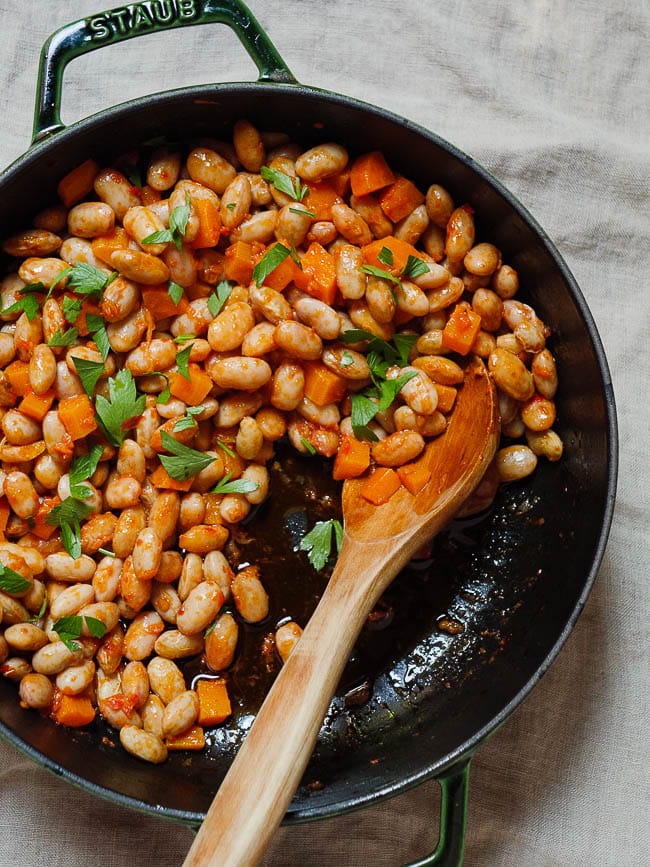
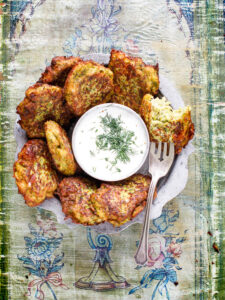






One Response
Delicieux ! I love it. One of my favourite spring meze.